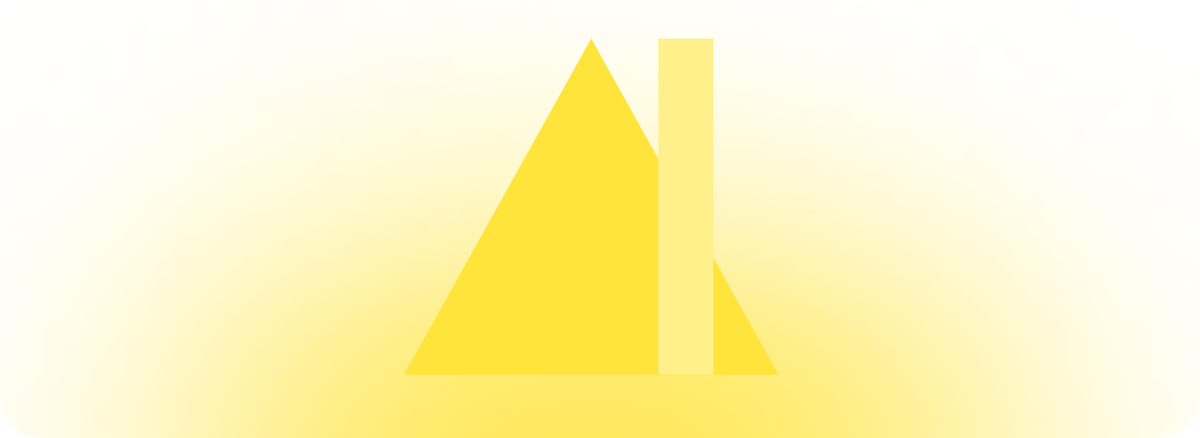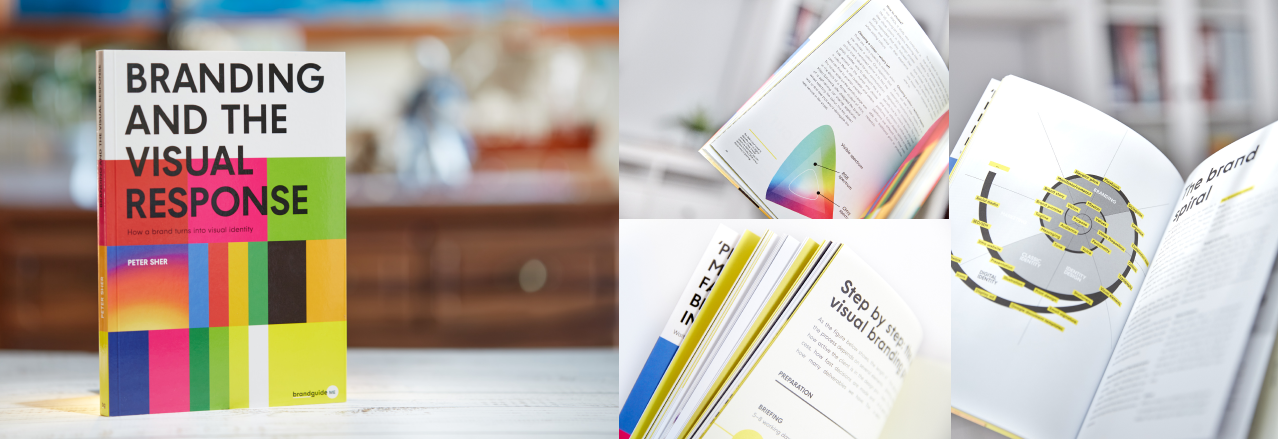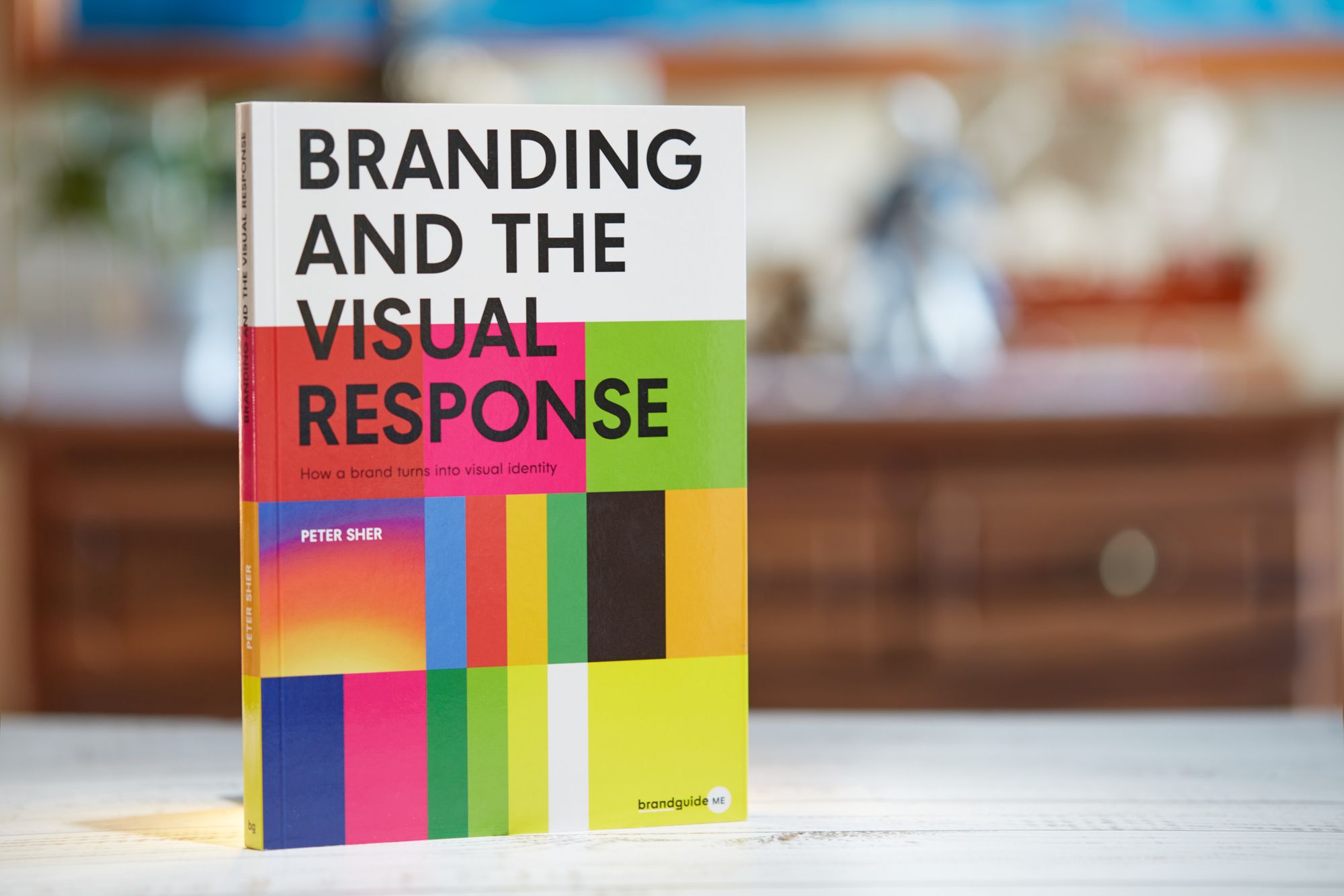AI in Graphic Design
What does it mean for the work of the graphic designer? What can you use it for? What can’t you use it for? New AI tools are introduced every day—let’s explore the opportunities they provide.

Summary—If you only have a few minutes...
It’s a really hot topic: everyone is talking about AI.
What does it mean for the work of the graphic designer? What can you use it for? What can’t you use it for? New AI tools are introduced every day—let’s explore the opportunities they provide.
- What is AI?
- Should we be afraid of AI?
- What is Chat GPT?
- What is Midjourney?
- What is Stable Diffusion?
- What is UIzard.io?
Will we and our profession be ‘killed off’ by AI? Will AI take away our chance to earn a living? We get this kind of questions every day. So, let’s take a look whether the jobs of designer are threatened by AI and what the future will bring.

How a brand turns into visual identity
Ready to elevate your design strategy? Get this must-have book in ebook or print format. Packed with practical advice, it’s your roadmap to becoming an elite designer who thinks strategically and builds unforgettable brands.
What is AI?
AI, artificial intelligence, is now used across a number of areas, including
- logic puzzles,
- theorem proving,
- automatic programming,
- symbolic computation,
- vision, image processing,
- robotics,
- speech recognition,
- natural language processing,
- constraint satisfaction,
- action plan generation,
- expert systems,
- artificial neural networks,
- data mining,
- agents, multi-agents.
AI or artificial intelligence is defined as the intelligence of machines, software or artificially created consciousness. Mostly associated with computers, it is increasingly used in the digital world.
With its vast applications, many people fear that AI will become a part of everyday life and take their jobs.
No doubt there are areas where AI works just as well as, or even better than humans.
Is design such an area?
The key question: should we be afraid of AI?
In many fields, jobs will be harder to find or will be completely taken over by AI. Or will they? Fear is always a strong emotion, and it’s usually the worst when you don’t know ‘the enemy’. This means you can cope better if you learn and gather information. When you know what you are up against, you can define your own job better. If you know the tools offered by artificial intelligence, you can use them to your advantage.
First of all, explore when and where you can use AI tools and how they can contribute to your day-to-day work.
Let’s make it clear: AI tools use the vast amount of data available on the internet to produce unique graphic design or text.
Don’t forget that we, humans, also use what we see and experience.
It’s not only AI that uses and analyses patterns, it just does it much quicker than we ever could.
There is an important question, however.
What about royalties in such cases? Working with these materials, using photos and graphic design by artists means using copyrighted material. When AI uses such materials, there are certain legal implications, which makes this a somewhat gray area.
Let’s take a look at what can help you understand the specifics.
Chat GPT: what is it exactly?
Surely, you have heard about Chat GPT, developed by Open AI. In short, it is text-generating AI: as you talk to it, give prompts and ask questions, it generates the text you need.
In the example below, I asked Chat GPT to define what makes a great visual identity.

After getting the prompt, the system quickly collected the elements it considered the most important:
- unique appearance,
- consistency,
- authenticity,
- identification.
Indeed, these are essential when you are designing a visual identity.
How may it help you and how may it harm you?
Obviously, it can help with phrasing in your design work or you can compare it with what you would normally use.
You can ask for help, or use it in SEO – IF necessary. This may be a bit of bad news for those who write blog posts, but let’s not forget something important:
if there is no content AI can work from, it can’t create content. If no original materials are created, AI’s output won’t be any good. For now, at least.
To sum it up, it can help you in your work, in creating the text of a website, in phrasing, in written documentation.
Midjourney: what is it exactly?
Midjourney generates graphic designs from prompts. You need to register via Discord to access Midjourney.
After you enter your prompt, it provides 4 variations based on the instruction set.

We wanted to know if it could create an appropriate design from the prompts – with the image on the bottom right it did just that.
You can refine the 4 versions offered by Midjourney: you can select the one you like the best and get 4 more versions based on that. Chances are you will get one that meets all your expectations.
And this was created in 3 minutes, which is incredible.
How may it help you and how may it harm you?
You often need images for a moodboard that can convey a notion. Midjourney is great for that, it can create an accurate representation of your ideas.
Whatever else you use to create a moodboard, it will always take longer than using an AI tool.
We’ve also tried to create packaging design with Midjourney.

We had a brief, then we gave it a go to see what it can create from our thoughts. The results were surprisingly nice. However, typography is not exactly AI’s forte at the moment.
All in all, you can quickly create a decent design with Midjourney. It can improve poor, mediocre designs, but it will never take the job of a good designer.
Stable Diffusion: how to use it?
In short, the same way you use Midjourney. Prompts, 4 images, more realistic solutions.
It can present your concept nicely, and it is a good solution for moodboards and visuals.
When using Google, you usually need to compromise. With Stable Diffusion the outcome is more likely to be accurate.
Legally it is not exactly clear what you can do with such outputs. Whichever AI tool you use, make sure you look into the legal implications before moving on with it.
UIzard.io: what is it exactly?
Can you use AI in UI design? This was the question we wanted an answer for.
We now know that it’s a work in progress, and right now all this tool can do is this:

This is the interface we got, and we were underwhelmed. Some of the elements we asked for confused the system, as you can see. UI designers don’t have to worry about this tool taking their jobs.
Summary
Let’s ask the question again: should we be afraid of AI?
We suggest that you should be informed, be open and use these systems when necessary. You don’t have to delegate every task to AI, but it can speed up certain processes.
All in all, you shouldn’t worry that visual branding or online marketing will disappear in the world of AI. It may be a threat to inferior designs, but not to real professionals. I you would like to deep dive into visual branding - i warmly prefer my book: Branding and the visual response.

How a brand turns into visual identity
Ready to elevate your design strategy? Get this must-have book in ebook or print format. Packed with practical advice, it’s your roadmap to becoming an elite designer who thinks strategically and builds unforgettable brands.
